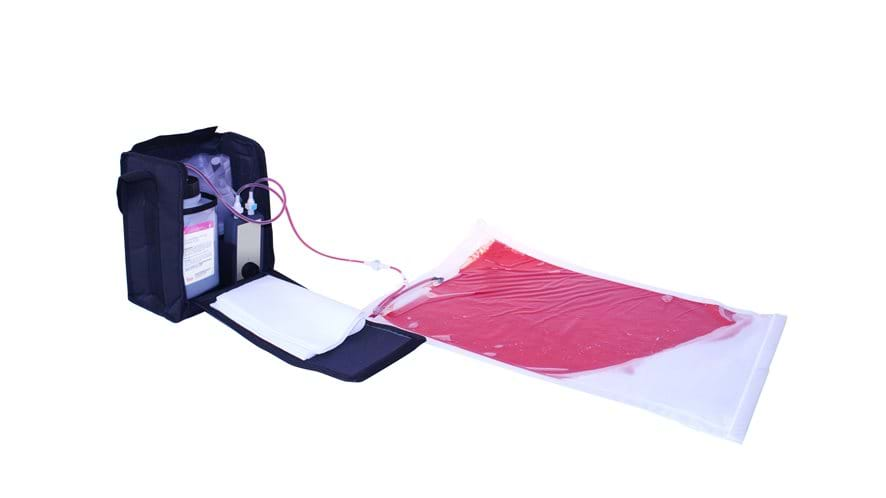News
Improving the Visual Estimation of Blood Loss
26 February 2021
It is common that healthcare professionals encounter bleeding in patients they are caring for, creating the need for quick decision-making.

A recent article states “among patients who arrive at the emergency department for trauma, hemorrhage is the leading cause of death within the first hour”, and that “nearly 50% of deaths are a result of hemorrhage” within the first 24 hours.5
We know that correctly assessing the amount of blood loss is essential in providing safe and effective life-saving treatments. However, visually estimating blood loss has proven to be much more difficult than it sounds. One study that focused on visually approximating blood loss showed “no association between specialty, years of experience, or confidence in ability with consistency or accuracy of estimating blood loss”.1 Another study found that “only 8% of estimates were within 20% of the true value” of blood loss. 2 In a study related to hemorrhage of postpartum patients, results show that “two-thirds of cases of immediate PPH (65.4%) were misdiagnosed using visual estimation”.3 Interestingly, blood loss can be either under or overestimated. One study concluded that “underestimation of the correct amount of blood tends to increase with large blood volumes, whereas small blood volumes often are overestimated”.4
A growing body of research shows that simulation can help to increase both competence and confidence in practitioner’s critical decision-making skills. In the case of quantifying blood loss, much work has been done to create cognitive aids and simulation scenarios that assist in the difficult task of visual estimation. But, even in a safe environment, visual estimation has proven inadequate in correctly assessing blood loss. For example, one study that evaluated operating room personnel’s simulation training showed that “95% of participants provided estimations that had >25% error in at least one scenario”.1 The fact is, unless the scenario is specifically set up to estimate blood loss, simulated blood is not often used in simulation centers due to the mess and extensive cleanup required. Often, healthcare personnel are given an amount of blood loss in a simulated scenario and asked to respond with appropriate interventions for critical care of the patient. What is lost in these scenarios is not the proper care of the patient, but rather the visual cue of an impending crisis.
Limbs & Things is proud to introduce the Clean Bleed™ Mat, designed to support all simulation scenarios, with any brand of trainer where external blood loss is a key indicator and measure of the emergency being simulated. This easy to set up and mess-free product can create the impression of any hemorrhage, including obstetrical, operative, or traumatic, through a controlled flow into a sealed mat. With the ability to easily adjust and manage the rate of flow, realistic scenarios can be created, allowing the trainee or clinician to identify blood loss, and respond accordingly.
Versatile and efficient, the Clean Bleed™ Mat can be used with simulated patients, full body manikins or task trainers, in both an outdoor and indoor setting. Additionally, the pads can be weighed for accurate quantification of blood loss during the scenario. After simulation, a two-way pump system ensures that the fluid can be pumped back into the reservoir provided, and the internal mat can be removed and rinsed for a hassle-free simulation experience.
Limbs & Things is committed to continually searching for answers to aid healthcare practitioners in critical decision-making skills. The Clean Bleed™ Mat is one more example of our dedication to healthcare simulation and patient safety.
To find out more about the Clean Bleed™ Mat, please contact our team.
References:
1. Estimation of blood loss is inaccurate and unreliable
2. Emergency Physician Estimation of Blood Loss
3. Postpartum blood loss: visual estimation versus objective quantification with a novel birthing drape
4. Accuracy of Visually Estimated Blood Loss in Surgical Sponges By Members of the Surgical Team
5. Autotransfusion: Stat Pearls



